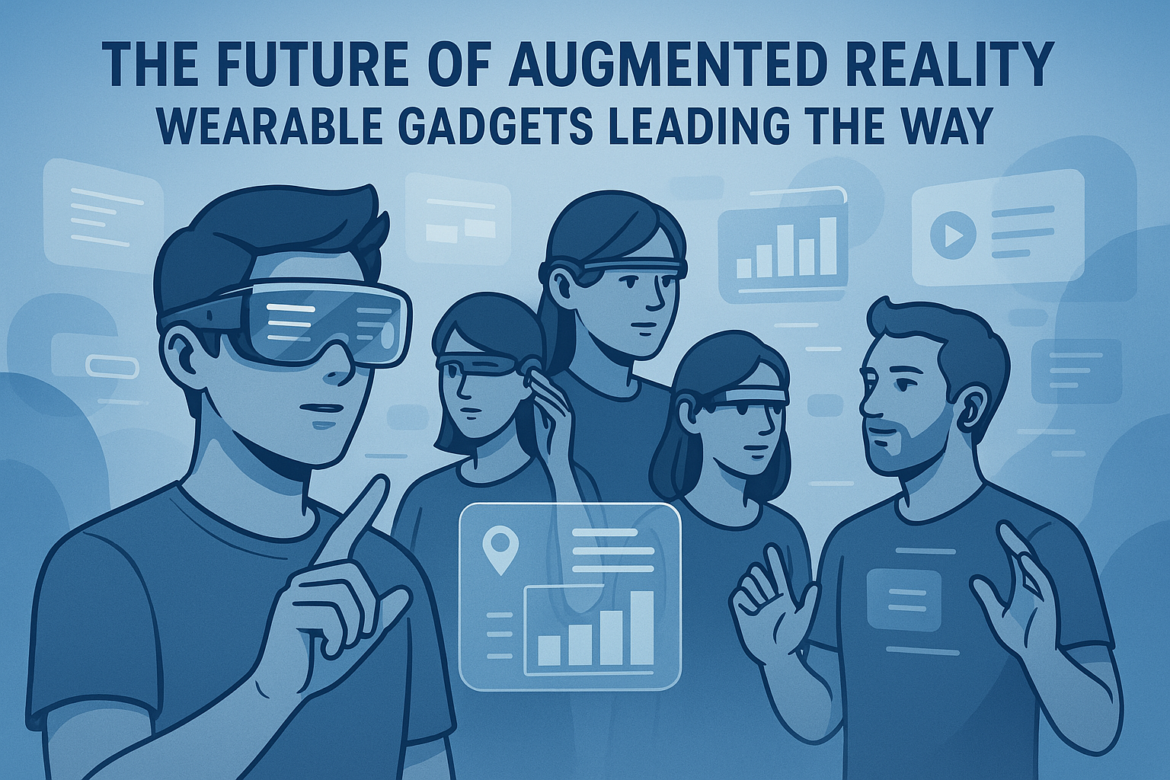AR and Wearable Tech: Where We’re Headed
AR isn’t just for sci-fi anymore; it’s becoming a part of our everyday lives. From games that pull you in to apps that help you find your way, AR has many uses, and devices like AR glasses are leading this tech shift. In this post, we’ll look at how these gadgets are changing industries, what AR tech means for us, and what we might see in the future.
1. What’s AR All About?
In basic terms, Augmented Reality (AR) has an impact on how we see the world around us. It adds digital stuff, like pictures or information, to what we see in real life through a screen or something you wear. AR is different from Virtual Reality (VR). VR puts you in a made-up world, while AR makes the real world better by adding useful digital things to it. This makes what we see and do more fun and full of information.
Think about it this way: AR can show you where to go as you walk around a city, step by step. Or it can let you play games where made-up characters show up right where you are. When you mix the real world with digital stuff like this, you get a tool that’s both exciting and useful for lots of different things.
2. How Wearable Gadgets are Making AR Popular
Many folks have already tried AR on their phones, but wearable gadgets are pushing this tech even further giving us hands-free smooth experiences. Here’s the scoop:
- AR Glasses: Companies like Microsoft with HoloLens and Apple are working on glasses that show digital information right in front of your eyes. These glasses could give you directions, alerts, and even let you play games in real-time all without needing to look at a separate device. This creates a more engaging experience for users.
- Smart Helmets and Headsets: Fields like construction and healthcare use AR-powered smart helmets to give workers key info such as blueprints or patient data, without taking their eyes off their work. This hands-free approach helps people do their jobs more and .
3. How Different Industries Are Using AR Wearables
Wearable AR devices are more than just cool gadgets; they’re changing how whole industries work. Here are some examples:
- Healthcare: AR glasses are giving surgeons access to real-time patient data, including heart rates and 3D organ images. This information helps them operate more and , which can save lives and lead to better results for patients.
- Education and Training: AR headsets are turning into valuable tools for both students and professionals. Medical students, for instance, can practice operations in virtual settings, while professionals can grasp complex ideas through interactive 3D models using AR.
- Gaming and Entertainment: AR wearables have a big impact on the gaming industry. AR glasses let gamers bring virtual stuff into their real world. Picture your living room turning into a battlefield for a first-person shooter or seeing opponents pop up in front of you in a virtual game.
- Retail: In the world of shopping, AR glasses allow customers to try on clothes or see how a piece of furniture will fit in their home before buying. This is causing a revolution in the shopping experience giving buyers a new level of ease and trust in what they’re buying.
4. The Future of AR Wearable Gadgets
The launch of 5G technology brightens the outlook for AR wearables. Quicker internet and reduced lag will create AR experiences that are fluid, engaging, and lifelike. Plus, firms are developing AR glasses that are more compact, weightless, and fashionable setting the stage for these devices to become a regular everyday accessory. In the years ahead, AR might integrate into every aspect of our lives, from our jobs to our leisure activities.
5. Challenges That Need to Be Solved
Although AR wearables show great promise, some hurdles remain before they can become widespread. Here are a few of these challenges:
- Cost: AR gadgets come with a hefty price tag right now, which makes it hard for many people to buy them. But as tech gets better and companies make more of these devices, we can expect prices to come down. This should make it easier for regular folks to afford AR gadgets in the future.
- Battery Life: Many AR devices run out of juice pretty so you can’t use them for a long time. This is a big problem for people who want to use these gadgets all day. The good news is that companies are working hard to make better batteries. They aim to create devices that last much longer before needing a recharge.
- Privacy Concerns: AR wearables often capture real-world data to show information, which raises privacy issues. These devices might record what you see and hear prompting key questions about data use and storage. Yet, as more people start using this tech, rules will change to tackle these privacy problems.
